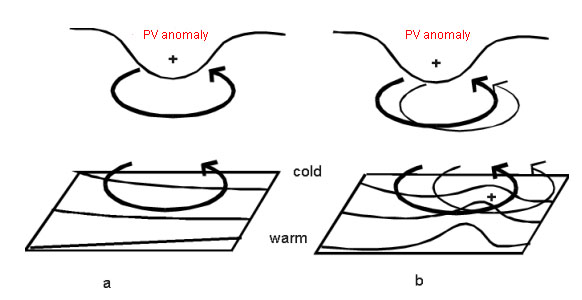
Fig 1. Graphical representation of a positive PV anomaly overrunning a baroclinic zone
The idea behind this theory goes according to the recognition of PV-anomalies. These upper-level anomalies that cause the tropopause to sink are characterised in the WV imagery as dark shaded areas. These characteristics of an upper-level PV anomaly can be examined in more detail and a discrimination in positive and negative upper-level PV anomalies can be made.
- In the case of a positive PV anomaly, the isentropes are characterised by higher values than in the surrounding areas (indicating colder air). The height of the tropopause has a local minimum. The corresponding pressure and wind field shows an area with low pressure and a cyclonic circulation. The cyclonic circulation is a result of the coriolis force. As the pressure at the surface drops, so will the upward motion increase, which draws air in hat begins to rotate due to the coriolis force. At the northern hemisphere this force is directed cyclonically.
- In the case of a negative PV anomaly, the isentropes are characterised by lower values than in the surrounding areas (indicating warmer air). The height of the tropopause has a local maximum. The corresponding pressure and wind field shows an area with high pressure and an anticyclonic circulation.
References
- Manual of Synoptic Satellite Meteorology
- Hoskins B. J., McIntyre M. E. and Robertson A. L. W. (1985): On the use and significance of isentropic potential vorticity maps; Quart. J. R. Meteor. Soc., Vol. 111, p. 877 - 946